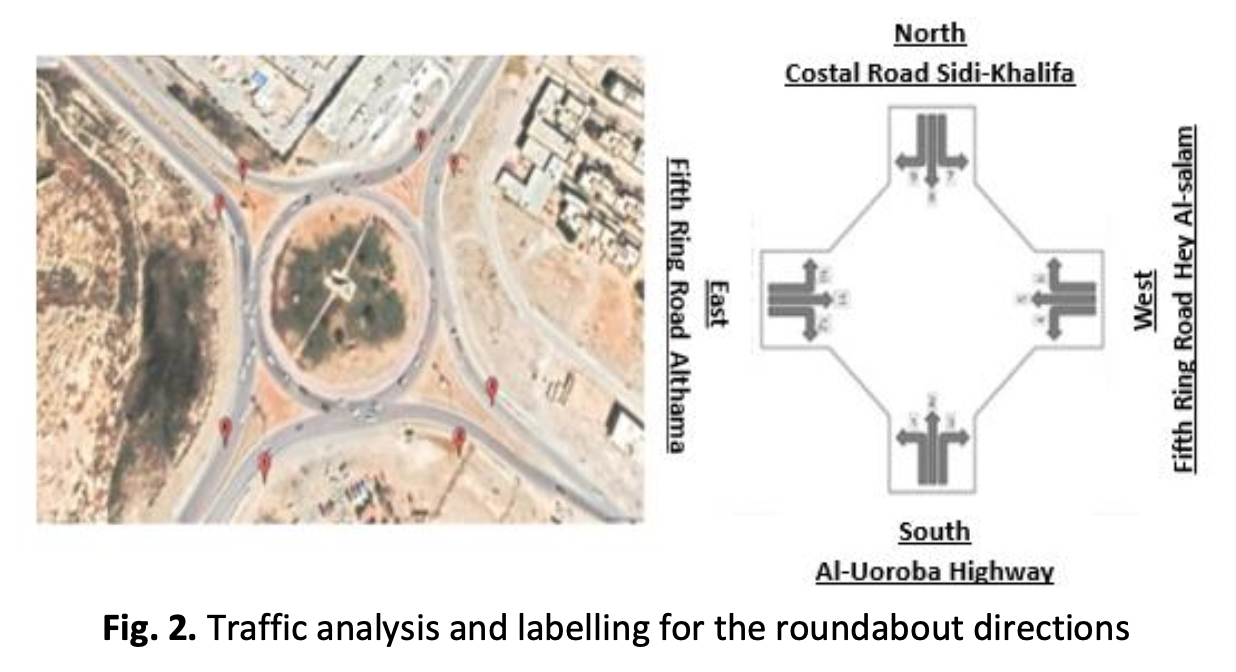Turbo-Roundabouts as a Tool for Enhancing Urban Efficiency and Safety: A Case Study
DOI:
https://doi.org/10.37934/araset.34.1.279288Keywords:
Roundabout, Traffic Congestion, SIDRA, Intersection Safety, Simulation, Level of Service, Urban Road InfrastructuresAbstract
Traffic jams occur when a volume of traffic influx produces a demand for space more significant than the road allows. Numerical field data addressing vehicle counts and statistical computer simulations are vital tools in determining a road’s serviceability and traffic level. Both have been utilized in this study. The primary objectives of this study are to conduct a comprehensive analysis of the traffic flow, measure the Level of Service (LOS), travel time, degree of saturation, delay time, and articulate a strategy to reduce traffic congestion at roundabouts. The study unequivocally concluded that the LOS at the eastern entrance is F level. The data on the number of vehicles that pass through the roundabout at the eastern entrance of Benghazi were recorded during the peak hours from (12:00 to 1:30) p.m. The mixed traffic stream was then converted to passenger car units (PCU) to be homogenously equivalent. The results of the systematic analysis of the gathered data indicate that the roundabout at Benghazi’s eastern entrance requires further development to alleviate the dire traffic conditions. To run an accurate simulation, the existing road layout was surveyed using surveying instrumentation, and the results were used to build a model. Acceleration and deacceleration lanes were proposed to improve the roundabout performance and reduce congestion. Then, the roundabout expansion proposal was introduced into the simulation to study its effectiveness in reducing traffic jams. The data were analyzed and tested using SIDRA software. The Level of Service at the roundabout’s lanes showed tremendous improvement as the Level of Service varied from A to B levels compared to the current LOS level of F.
Downloads





























